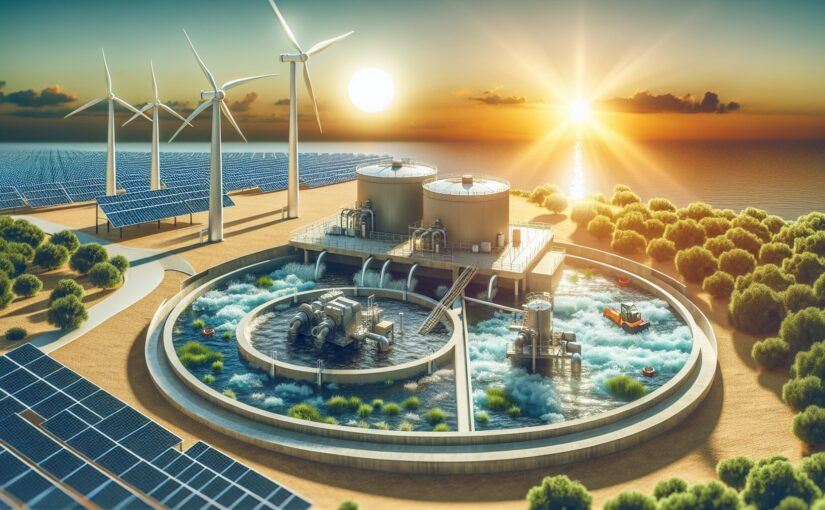As environmental consciousness continues to increase and the need for renewable energy sources continues to grow, researchers have discovered an unexpected energy source – wastewater. Yes, it is true, the waste that is flushed down our toilets and sinks has the potential to power our future. In fact, renewable energy from wastewater is not a strange or novel concept, but something that’s evolving as an essential part of sustainable wastewater management strategies[^1^].
Powering the Future
The energy inherent in the organic matter that makes up our waste is enormous. When this waste is broken down, a significant amount of energy could theoretically be harvested. This energy can either be employed locally for various purposes even as we make substantial strides toward a circular economy or fed into our local power grids.
Various scientific models and studies estimate that humanity could meet up to 12% of its total energy needs just by effectively harvesting and reusing energy from wastewater[^2^]. That’s a clear indication that wastewater energy harvesting isn’t something to be ignored – it’s a potential major player in meeting our renewable energy goals.
Changing the Approach: Wastewater As Resource
One of the first steps towards effective energy harvesting from wastewater is to shift our perspective. For a long time, the traditional perception of wastewater has been one of a problem to be managed – something dirty and undesirable that needs to be cleaned and disposed of.
Instead, we should be thinking of wastewater as a resource, a goldmine of potential energy waiting to be tapped. Adopting such a point of view would facilitate more research, funding and innovation into the sector, making it more attractive to investors and governments.
But how can we reclaim this energy, you may wonder?
Current Techniques
Several methods are currently being explored, and the most promising among them is the method of microbial fuel cells (MFCs). MFCs operate by using bacteria to metabolize organic material in the wastewater, a process which creates electrons. These electrons can then be harvested and converted into electricity[^3^].
Another method is anaerobic digestion, where bacteria break down the organic material in the wastewater in an oxygen-free environment. This process releases biogas – mostly methane – which can be collected and used as fuel.
Moreover, thermal conversion techniques, including incineration, pyrolysis, and gasification, are also efficient ways to extract energy from wastewater.
The Way Forward
Although we still have a long way to go before renewable energy from wastewater can be commercially viable, the research currently underway is promising. This, coupled with the ever-increasing need for renewable energy sources, will push us to turn wastewater from waste into a resource – a change that will benefit both the environment and economy.
Remember, the future of renewable energy might be waiting beneath us, in the least expected places. Let’s make optimum use of our resources, even if it means reusing our waste. After all, recycled waste could be the key to our energy-efficient future.
[^1^]: Water-energy: A critical review of the energy demand in the municipal water cycle
[^2^]: Energy positive domestic wastewater treatment: the roles of anaerobic and phototrophic technologies
[^3^]: A Critical Review of Microbial Fuel cell: From Mechanisms to Applications
